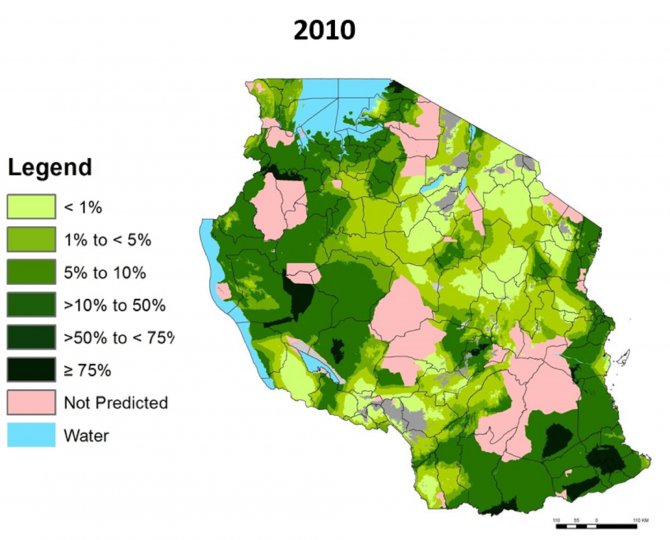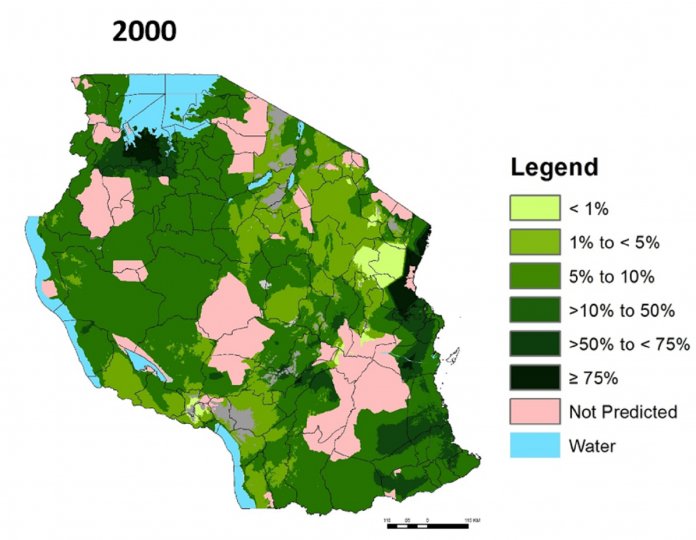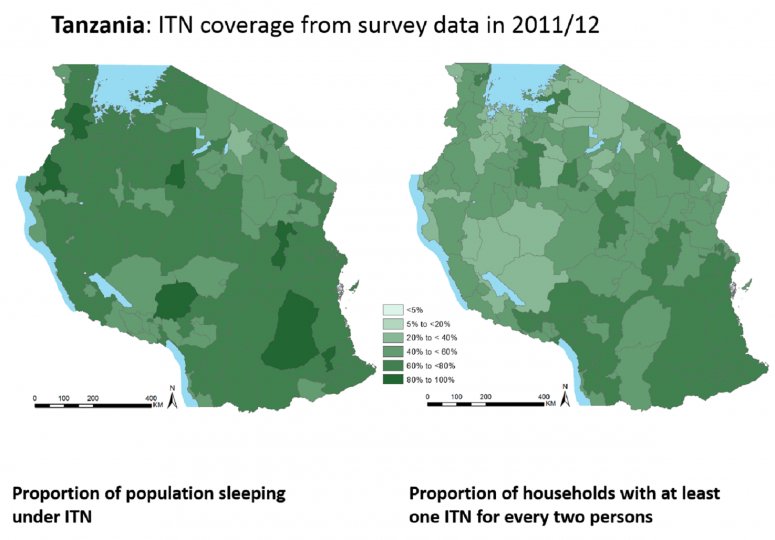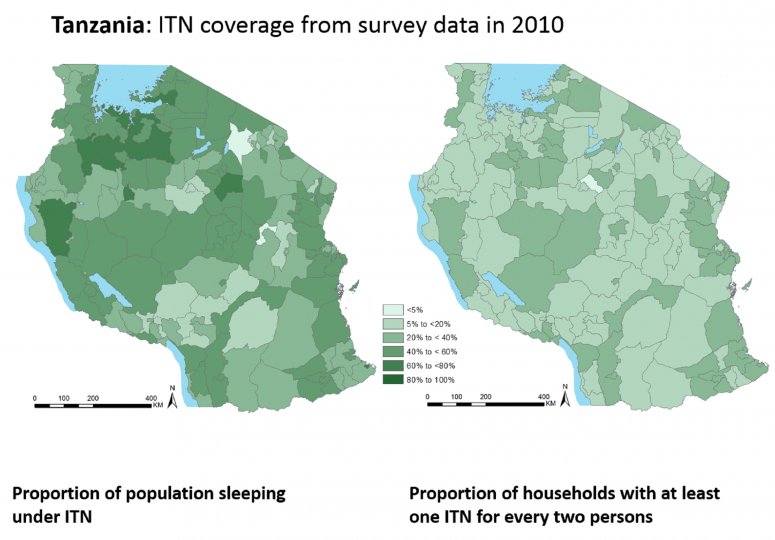Malaria in Tanzania
Malaria is a major public health problem in mainland Tanzania. It is a leading cause of morbidity and mortality, particularly in children under five years of age and pregnant women.
Tanzania is currently under a malaria epidemiological transition, with 60% of the population are currently living in areas of parasitaemia 0 - <10 %, up from 30% in 2000. Tanzania is quickly moving into a sustained control phase with moderate to low transmission, with some areas in a pre-elimination stage with transmission levels of less than 1%. However, the climate remains favourable for transmission throughout almost the entire country, with about 95% of mainland Tanzania at risk. Tanzania has the third largest population at risk of stable malaria in Africa after Nigeria and Democratic Republic of the Congo.
National Malaria Strategic Plan 2014-2020
The 2014-2020 National Malaria Strategy (NMSP) aims to reduce the average country malaria prevalence from 10% in 2012 to 5% in 2016 and to less than 1% by 2020. This will be achieved by scaling-up and maintaining effective and efficient vector control interventions including:
- promotion and provision of universal access to appropriate early diagnosis and prompt treatment
- provision of preventive therapies and vaccines to vulnerable groups.
This will be accompanied by the promotion of malaria prevention and curative services through information, education and communication and improving monitoring, surveillance and evaluation of data.
Bed net coverage
Malaria prevention through the use of insecticide-treated nets (ITNs) and LLINs since 2009 has been successful. There has been a large increase in ITN/LLIN ownership from 2008 to 2012. Rural areas have seen a three-fold increase in ownership.
LINK activities
As part of the 2013-4 INFORM programme a malaria profile was produced for Tanzania in collaboration with the National Malaria Control Programme, Ministry of Health and Social Welfare. The Phase 1 epidemiological profile was timed to feed into a review of progress leading to the launch of the 2014-2020 NMSP. The NMS 2004-2013 (NMCP, 2008) provided combinations of descriptive narratives and modelled maps of malaria risk developed under the Mapping Malaria Risk in Africa (MARA) initiative.
As part of this work LINK collated evidence from 565 published articles or MSc/PhD theses and 26 implementation reports/ policies.




